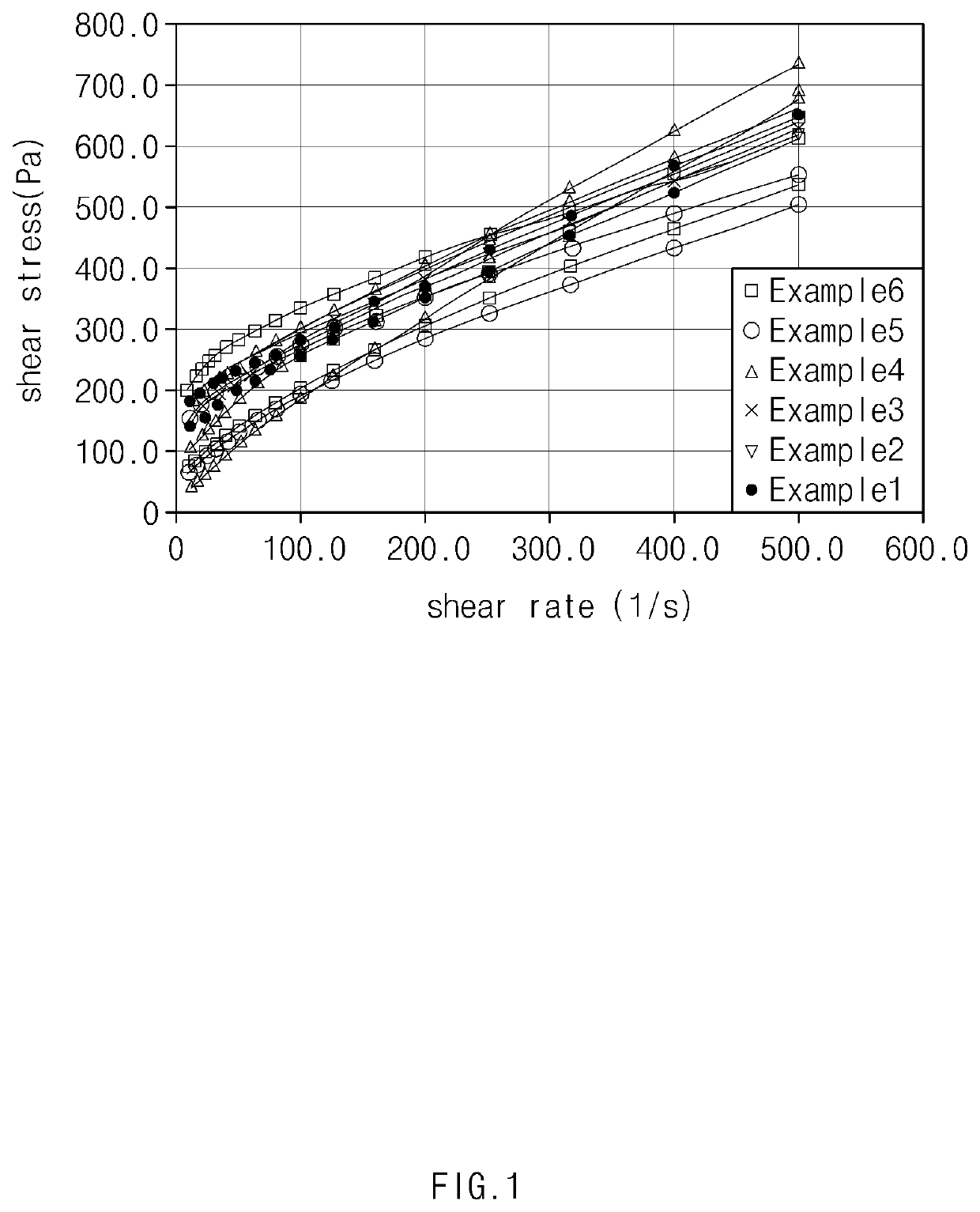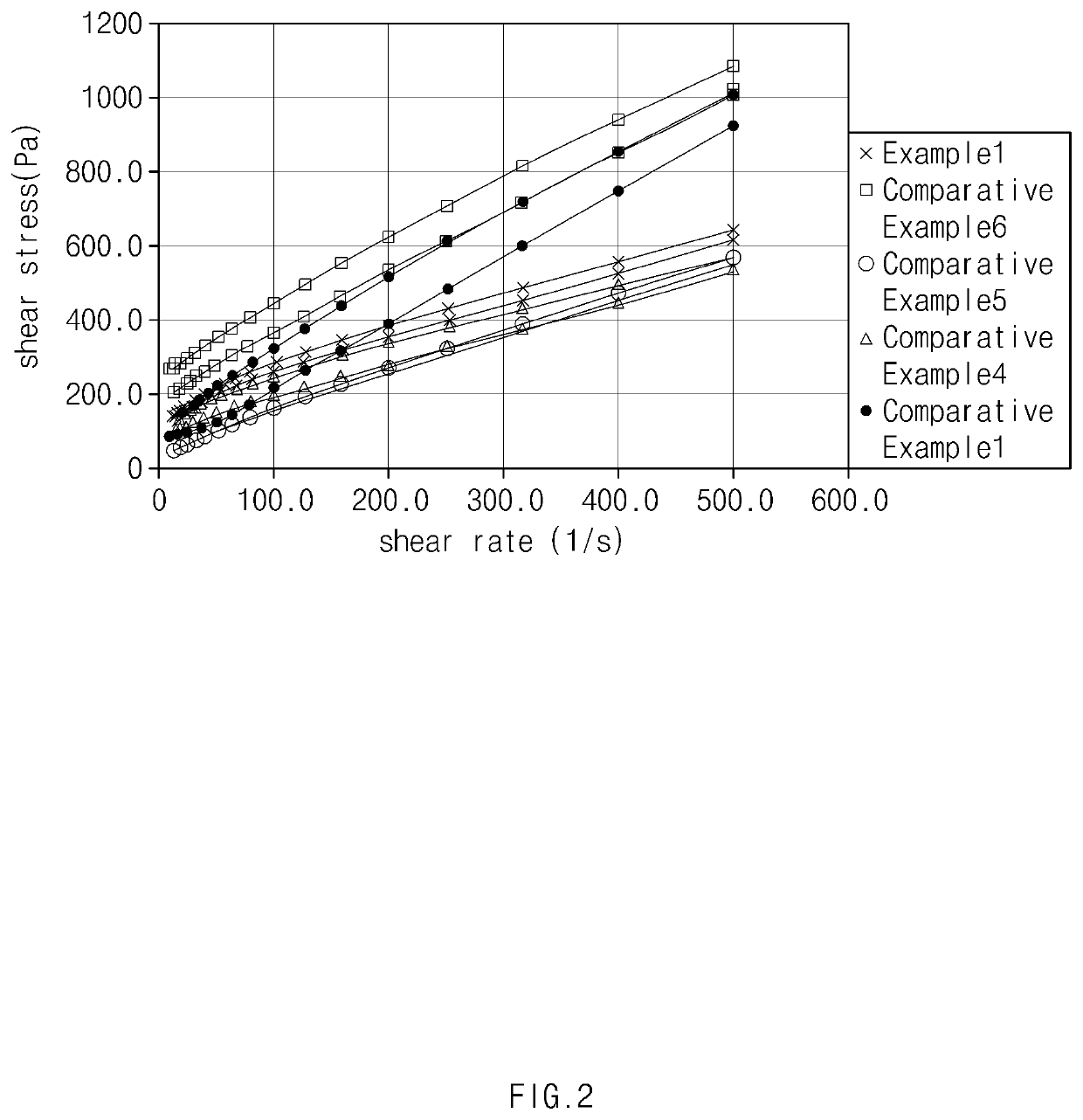Method for preparing polyvinyl chloride
a technology of polyvinyl chloride and polyvinyl chloride, which is applied in the field of polyvinyl chloride-based polymers, can solve the problems of difficult application, low processability of vinyl chloride-based polymers for paste processing, and non-uniform thickness of coatings, and achieves low shear region, low viscosity and stress reduction, and high viscosity properties.
- Summary
- Abstract
- Description
- Claims
- Application Information
AI Technical Summary
Benefits of technology
Problems solved by technology
Method used
Image
Examples
example 1
[0023]To a 500 L high pressure reactor, 100 parts by weight of polymerization water, 0.02 parts by weight of sodium lauryl sulfate, 0.062 parts by weight of potassium persulfate, and 1.25 parts by weight of vinyl chloride seeds with a particle size of 0.6 μm were injected, and vacuum was applied to the reactor while stirring. To the reactor in a vacuum state, 100 parts by weight of a vinyl chloride monomer was injected, the temperature of the reactor was elevated to 54° C., and polymerization was initiated. After initiating polymerization, 0.6 parts by weight of saponified myristic acid was continuously injected to the reactor for 6 hours. Then, the reaction was finished when a polymerization conversion ratio was 85%, and unreacted vinyl chloride monomer was recovered and removed to obtain a vinyl chloride polymer latex. The latex thus obtained was spray dried to obtain a granular vinyl chloride polymer (average particle diameter of 0.28 μm). In this case, the saponified myristic ac...
example 2
[0024]A vinyl chloride polymer was obtained by conducting the same method as Example 1 except for using a mixture of saponified palmitic acid and stearic acid (in 6:4 molar ratio) instead of the saponified myristic acid. In this case, the mixture of saponified palmitic acid and stearic acid was prepared by adding 1.007 mol of the mixture of palmitic acid and stearic acid (in 6:4 molar ratio) and 1 mol of potassium hydroxide to deionized water one by one, and conducting saponification reaction at 70° C. for 1 hour. The acidity (pH) thereof was 11.
example 3
[0025]A vinyl chloride polymer was obtained by conducting the same method as Example 2 except for using the palmitic acid and the stearic acid in the mixture of the saponified palmitic acid and stearic acid, in a molar ratio of 4:6.
PUM
| Property | Measurement | Unit |
|---|---|---|
| particle size | aaaaa | aaaaa |
| temperature | aaaaa | aaaaa |
| particle diameter | aaaaa | aaaaa |
Abstract
Description
Claims
Application Information
 Login to View More
Login to View More - R&D
- Intellectual Property
- Life Sciences
- Materials
- Tech Scout
- Unparalleled Data Quality
- Higher Quality Content
- 60% Fewer Hallucinations
Browse by: Latest US Patents, China's latest patents, Technical Efficacy Thesaurus, Application Domain, Technology Topic, Popular Technical Reports.
© 2025 PatSnap. All rights reserved.Legal|Privacy policy|Modern Slavery Act Transparency Statement|Sitemap|About US| Contact US: help@patsnap.com


